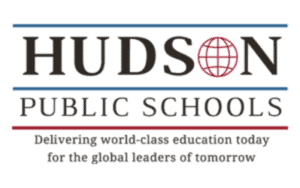 HUDSON – The School Committee met with the Select Board and Finance Committee on Nov. 28 to take a first look at the 2025 fiscal year budget for the Hudson Public Schools.
HUDSON – The School Committee met with the Select Board and Finance Committee on Nov. 28 to take a first look at the 2025 fiscal year budget for the Hudson Public Schools.
Superintendent Brian Reagan said as the leader of one of the town’s largest departments, which is the beneficiary of “approximately 50% of the town’s resources,” he views the budget through the lens of both the superintendent and as a resident.
Through his meetings with community leaders and members, he said school finances come up as a topic, specifically responsible spending.
“I took that seriously and took a really deep dive into how dollars have been spent by the school department,” said Reagan.
Reagan said 2025 would be a tight year for the school budget, which was the reason for partnering with the Select Board and Finance Committee, as well as Executive Assistant Thomas Gregory, during the process. He said there was an unfortunate convergence of events, including participating in a bid process for a new transportation contract.
He said they have seen significant escalation in cost over the past five years. Specifically, the gap between the typical cost for transportation and what the district is paying is hitting them with a 30% increase to that budget.
RELATED CONTENT: Hudson School Committee reviews student activity funds
They have also seen an increase in out-of-district student tuition, and the COVID-19 relief funds will end with the 2024 fiscal year budget.
“So these things together really create this gap between revenue and expenses that we’re looking at right now at about $2 million,” said Reagan.
Director of Finance and Operations Dan Gale said the district is projecting to use $3.7 million from School Choice funds to balance the 2025 fiscal year budget, with only $1 million of the funds coming from recurring revenue.
Gale did note that they got an additional $756,000 in Chapter 70 funds in the 2024 fiscal year, and he called the funding source a “permanent increase that we can rely on” as the amount can never decrease each year.
Chapter 70 funding information should be available to municipalities in late January, according to Gale.
Strategic objectives
Reagan said that the community’s support for the schools with the budget and capital projects is what compelled him to stay and work in Hudson.
He spoke about the three strategic objectives that drive their work on the budget, such as high quality instructional practices, educating the whole student and the culture of the schools, which refers to promoting equity and eliminating opportunity gaps.
Reagan said some initiatives in the school currently include a review of the elementary literacy curriculum, the K-12 dual language program and forming a Diversity, Equity, Inclusion, Acceptance and Belonging Committee. The committee would be a result of the equity audit done at the district last year.
RELATED CONTENT: School Committee discusses timeline for 2025 fiscal year budget
One area they are focusing on is enrollment, as some students are choosing to attend Assabet Valley Regional Technical High School or the Advanced Math and Science Academy Charter School.
“We’d really like to make Hudson a better choice for more parents,” said Reagan.
In terms of the special education component, he said Hudson has done a good job building in-district programs “so we can keep more kids here.”
Reagan said, “These programs have been developed and implemented at all levels.”
Where the district tries to be efficient with the allocated funds from the town is adding personnel for student support in the area of social and emotional learning with adjustment counselors and school psychologists.
The goal is to add funding “where the kids are” and follow the changes in student populations. Reagan noted that a decline in enrollment is something that affects schools across the state, not just in Hudson. In 2013 –14, the overall enrollment was 2,947 and in 2022-23, the enrollment was 2,323.
However, he noted the district has gone from being 20 percentage points behind the state average to “catching up” in terms of retaining high-needs students, such as students in special education and the English language learner programs, and meeting their needs through programming.
He said there has been a shift in having educators meet the needs of high-needs students. Despite an overall decrease in enrollment, there is not a decrease in staffing. There has been a repurposing of educators to a less traditional classroom instead.













